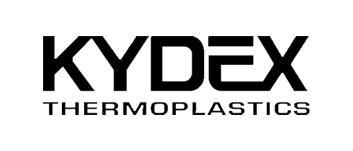Device manufacturers have a number of criteria to consider when selecting plastic materials. High-performance plastics are the natural choice not just a single reason, but a combination of features and benefits. These plastics should be selected during the design process due to their ability to meet the application requirements, quality of the device, productivity and/or save costs.
As a general family of products, high performance plastics share several demonstrable advantages over ‘traditional’ plastics. In the medical device market, the weight savings of high performance plastics are key, offering a typically reduced weight compared with other materials. Weight is a factor in medical device instrumentation where weight reduction combined with strength is an advantage.
High performance plastics are able to withstand the effect of corrosion of common chemicals, water and a variety of solvents, acids and other corrosive liquids. Also, many performance plastics are highly suitable for repeatable autoclaving. They also have impact resistance advantages – their inherent ability to resist breakage from impact makes them a wise choice in tough applications. Closely linked to impact resistance, products can be designed to absorb impact energy and lessen the shock/vibration transmitted into the supporting device.
There are additional advantages to high performance polymers. In cases – like instrumentation – where noise reduction might apply, high performance plastics reduce/eliminate noise generated and have excellent insulation properties. There are also benefits when lubrication is an issue – they can include additives which improve their inherent good-to-excellent wear properties. This is especially true in the class of high performance engineering plastics.
Additional advantage of of high performance polymers
- Temperature – Knowing the temperature limits of specific high-performance plastics often plays a critical role in the selection process.
- Wear Properties – Closely linked to low friction characteristics, plastics eliminate wear on mating surfaces.
- Abrasion resistance – Plastics wear longer and reduce maintenance needs, promote longer run times and can result in improved productivity.
- Non-Marking properties – Plastics will not deface the finished product.
- Value vs. Price – The cost of the performance plastic is offset by the improved life in use, lower maintenance requirements, reduced wear on mating surfaces, environmental considerations and so forth.
- Ease of machining/fabrication – Performance plastics are typically easier to machine than most metals, cause less wear on machine tools, are easier to handle during the machining process, reduce finishing costs, are easily decorated and can exhibit integral color.
- Versatility – Performance plastics are available in their natural form and modified (enhanced) forms. They are manufactured in various shapes, sizes and colors and available in FDA and X-ray detectable grades.
- Environmentally friendly – Contrary to some misguided popular opinions, performance plastics are green! Performance plastics require far less energy to produce than metals, have a lower carbon footprint, are less costly to ship and many types are recyclable.
Selecting performance plastics
To make an intelligent material selection for a medical device with a performance plastics there are several questions to ask, especially at the beginning of a project, when the parameters may not be finite or well known. Selecting the ideal performance materials can be challenging.
Modern Plastics can assist in the material selection process, provide data and samples as needed to help customers select the best material for their application. There are of course, certain things to consider. For example, do you need to see through it – that is, should the material be transparent? What is the operating temperature? Does it have to have to be chemical or corrosion resistant?
We would also consider what the tensile / load requirements are, if any specific characteristics are needed and what the special needs are of the project. If the material needs to meet any certifications such as ISO 1099, we would include that in the selection as well as the planned method of manufacture. On top of this we would look at what is motivating or driving interest and of course, cost considerations come into play.
Sterilisation methods
Sterilisation methods also limit choices of potential materials. Many of the devices used in orthopaedic surgery are reused. After surgery, materials are cleaned with a high pH cleaner and then steam sterilised in an autoclave. This combination of heat and water in the form of steam limits the selection of plastic materials to a handful of candidates.
There has been a trend recently to make single-use devices that can then be handled as revenue generators for the OEM and billed to the patient when used in a surgical procedure. Currently, reusable devices are provided at no cost to the surgeon to support the surgical procedure that places the implant in the body. However, these are not billable items. Thus, with the migration to single use devices increasing, the sterilisation method is changing to one in which gamma exposure with the device in package is preferred. Gamma radiation will create changes in the polymer which again captures the eye of the FDA with respect to the validity of the ISO 10993 test performed on raw materials that were not exposed to radiation prior to testing.
Some raw materials ultimately end up in surgical devices that also contain sensitive electronic components. If these are repeated use devices, the sterilisation process needs to be something that can occur at the hospital and does not use heat and moisture. Cold sterilisation employs hydrogen peroxide plasma gas at temps of sterilisation methods.
Sterilisation methods also limit choices of potential materials. Many of the devices used in orthopedic surgery are reused. After surgery, materials are cleaned with a high pH cleaner and then steam sterilized in an autoclave. This combination of heat and water in the form of steam limits the selection of plastic materials to a handful of candidates.
There has been a trend recently to make single use devices that can then be handled as revenue generators for the OEM and billed to the patient when used in a surgical procedure. Currently, reusable devices are provided at no cost to the surgeon to support the surgical procedure that places the implant in the body. However, these are not billable items. Thus, with the migration to single use devices increasing, the sterilization method is changing to one in which gamma exposure with the device in package is preferred. Gamma radiation will create changes in the polymer which again captures the eye of the FDA with respect to the validity of the ISO 10993 test performed on raw materials that were not exposed to radiation prior to testing.
Some raw materials ultimately end up in surgical devices that also contain sensitive electronic components. If these are repeated use devices, the sterilization process needs to be something that can occur at the hospital and does not use heat and moisture. Cold sterilization employs hydrogen peroxide plasma gas at temps of ~120 F. One filter to consider for a material selection for a device intended for cold sterilisation is the chemical resistance of the material to hydrogen peroxide. Another is whether the material will disrupt the cycle process by reducing the available H2O2 to achieve sterilisation. Sensors on these systems track H2O2 availability. When it drops below an acceptable range, the sterilisation cycle is aborted, requiring the process to be re-started. Some thermoplastics are eliminated from consideration due to this even though they are perfectly fine after exposure to this environment.
Finally, ethylene oxide (EtO) is a bulk sterilisation process for single use devices. EtO does not present any compatibility challenges with plastics but has an affinity to some and residuals become an issue.
One filter to consider for a material selection for a device intended for cold sterilisation is the chemical resistance of the material to hydrogen peroxide. Another is whether the material will disrupt the cycle process by reducing the available H2O2 to achieve sterilisation. Sensors on these systems track H2O2 availability. When it drops below an acceptable range, the sterilisation cycle is aborted, requiring the process to be re-started. Some thermoplastics are eliminated from consideration due to this even though they are perfectly fine after exposure to this environment.
Finally, ethylene oxide (EtO) is a bulk sterilisation process for single use devices. EtO does not present any compatibility challenges with plastics but has an affinity to some and residuals become an issue.
Medical plastics distributors
Plastics distributor that specialize in medical plastics are uncommon but should offer a number of services such as:
- Experienced technical sales staff in medical plastics
- Material barcoding – so important to clearly identify materials and trace batch, resin and lot.
- Complete material traceability – closely linked to barcoding, but so much more is involved.
- 20-year record retention should be the minimum.
- Same day, overnight shipping service
- Complete material certifications
- ISO 9001 AND ISO 13485 compliance.
- Non-disclosure agreements should be a common practice.
- Environmentally-controlled and monitored storage conditions are essential.
- Large and diversified inventory in stock
- Ability to cut-to-size and other value added services
- Able to distribute plastics from several ‘premier’ quality manufacturers.
- Should be open to customer on-site auditing.

![Evonik-VESTAKEEP-PEEK-DSC_0264-Spinal-cages-1000×600[1]](https://modernplastics.com/wp-content/uploads/2016/02/Evonik-VESTAKEEP-PEEK-DSC_0264-Spinal-cages-1000x6001.jpg)









0 Comments